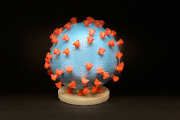Types of Juvenile Arthritis - Do You Know About it?
Pauciarticular Juvenile Rheumatoid Arthritis affects up to four joints in the body. Pain, swelling, and stiffness are all symptoms of this disorder. Knee and wrist joints are especially vulnerable.
If five or more joints are affected, then the young person has Polyarticular Arthritis. Girls are more susceptible to the disorder than boys.
As in adult rheumatoid arthritis, the individual may develop nodules (bumps or swelling around joints). Pain and swelling of the joints of the hands, hips, knees, and ankles may be experienced. The child may also develop a low-grade fever.
The third form of juvenile arthritis is known as Systemic Juvenile Rheumatoid Arthritis. As the name implies, it affects the entire body. Symptoms include a high fever that spikes in the evening and breaks, a rash, and swollen lymph nodes. The spleen may become enlarged. As the disease progresses, the joints become swollen, stiff, and painful.
Regular physical activity will likely be recommended. The doctor or physical therapist will be able to recommend activities that are less likely to put stress on irritated joints.
The symptoms of juvenile rheumatoid arthritis can start off looking like the flu or a virus. Be alert for a fever that spikes in the evening and disappears which is accompanied by a rash. If you have concerns about your child's health, be sure to consult with your family doctor. Best Orthopedic Doctor in NYC Offers Treatment for Arthritis. Avail these treatments today.
If five or more joints are affected, then the young person has Polyarticular Arthritis. Girls are more susceptible to the disorder than boys.
As in adult rheumatoid arthritis, the individual may develop nodules (bumps or swelling around joints). Pain and swelling of the joints of the hands, hips, knees, and ankles may be experienced. The child may also develop a low-grade fever.
The third form of juvenile arthritis is known as Systemic Juvenile Rheumatoid Arthritis. As the name implies, it affects the entire body. Symptoms include a high fever that spikes in the evening and breaks, a rash, and swollen lymph nodes. The spleen may become enlarged. As the disease progresses, the joints become swollen, stiff, and painful.
Treatment for Juvenile Rheumatoid Arthritis:
Treatment options for juvenile rheumatoid arthritis are much the same as for adults. Anti-inflammatory medications may be prescribed. A course of physical therapy may be part of the treatment plan.Regular physical activity will likely be recommended. The doctor or physical therapist will be able to recommend activities that are less likely to put stress on irritated joints.
The symptoms of juvenile rheumatoid arthritis can start off looking like the flu or a virus. Be alert for a fever that spikes in the evening and disappears which is accompanied by a rash. If you have concerns about your child's health, be sure to consult with your family doctor. Best Orthopedic Doctor in NYC Offers Treatment for Arthritis. Avail these treatments today.







1 Comments
Great post, thanks for sharing such an great information with us. It is really very helpfu for Dr. Shailendra Patiil Vikhroli
ReplyDelete